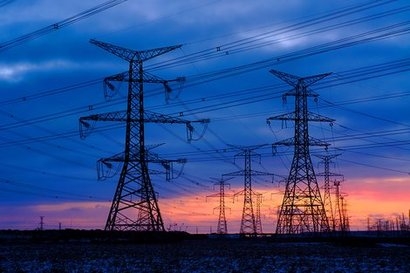
A revolution in the use of energy by these three sectors is possible over the next 30 years, bringing about sharp reductions in CO2 emissions. Written in partnership with Eaton and Statkraft the report, Sector Coupling in Europe: Powering Decarbonisation, outlines a plausible pathway of electrification, taking account of current levels of policy ambition in countries like the UK and Germany.
Electrification could take place via a mix of ‘direct’ and ‘indirect’ changes. ‘Direct’ would involve the proliferation of electric vehicles in as much of the transport sector as possible, and the spread of electric heating systems like heat pumps in buildings and some parts of industry; and ‘indirect’ would involve a switch to ‘green hydrogen’ – produced by electrolysis using renewable electricity – as a fuel to provide heat for buildings and as many industrial processes as possible, that otherwise would rely on fossil fuels.
The report estimates that the power system could need 75 percent more generation capacity by 2050 compared with what would be needed without the additional sector coupling, with low-cost wind and solar plants comprising most of that. The power system would also need to be more flexible due to the different energy consumption patterns of heating and transport. At the same time, the newly electrified sectors could create new sources of this ‘flexibility’ – by being able to alter their consumption patterns – provided the right policies and technologies are in place.
Such an electrification pathway would enable power (directly and indirectly) to account for up to 60 percent of final energy demand by these sectors, compared to just 10% now. That would still be far short of full decarbonisation for those sectors. That is due to the various hard-to-abate activities within them – including aviation, shipping, long-haul road transport and high-temperature industrial processes such as cement and steel – as well as the long replacement cycles of some assets.
“Electrification, or ‘sector coupling’ as it’s known in some countries, could make a huge contribution to the achievement of governments’ emission-reduction targets by exploiting the low-carbon transition already underway in the power generation sector” said Victoria Cuming, head of global policy analysis for BNEF. “However, action from policy makers will be needed if these changes are to happen. Governments should introduce incentives or requirements to cut emissions from building heat, support demonstration projects for electrification, and iron out barriers to the production of green hydrogen. They should also consider how to engage energy consumers and civil society as they have a crucial role to play in enabling electrification of these new sectors.”
Albert Cheung, head of analysis for BNEF, added that electrifying other areas of the economy will have significant repercussions for the power system and that policy makers will have to support the reinforcement and extension of the grid to handle higher power volumes and more renewables, and the deployment of batteries and other sources of flexibility to balance the system.
To further reduce emissions to net-zero, governments would need to introduce more ambitious policies accelerating the ‘sector coupling’ pathway, and bring other technologies to market such as carbon capture, use and storage (CCUS). They would also have to address agriculture and land use.
“It will be crucial that governments and regulators adopt an electricity market design that enables developers of wind and solar projects, and those planning battery storage plants or demand response services, to anticipate level of returns that justify their investment” Mr Cheung said.
In the report’s pathway, which assumes that the above mentioned challenges are met, total emissions across power, transport, buildings and industry fall by 68 percent from 2020 to 2050. This compares with a reduction of 60 percent if only considering transport, buildings and industry.
For additional information:

